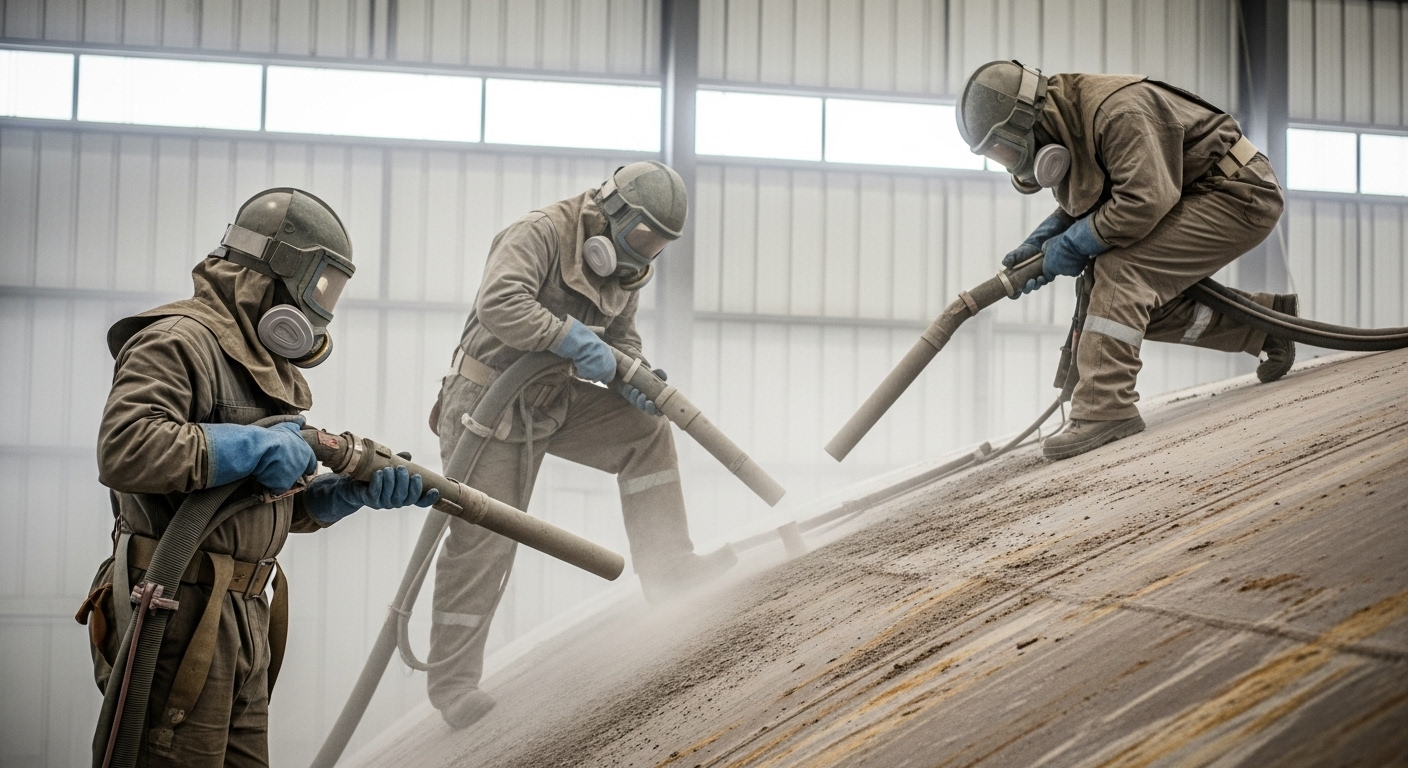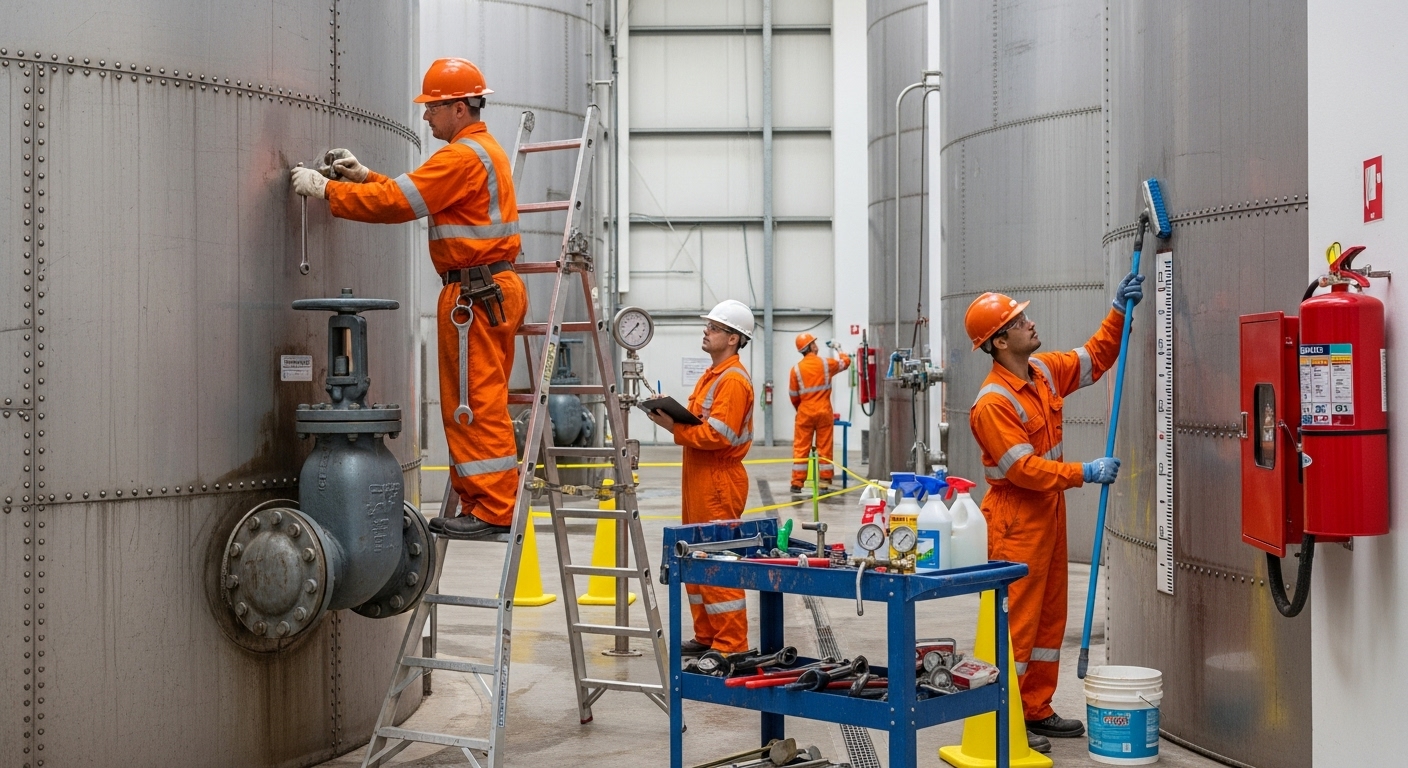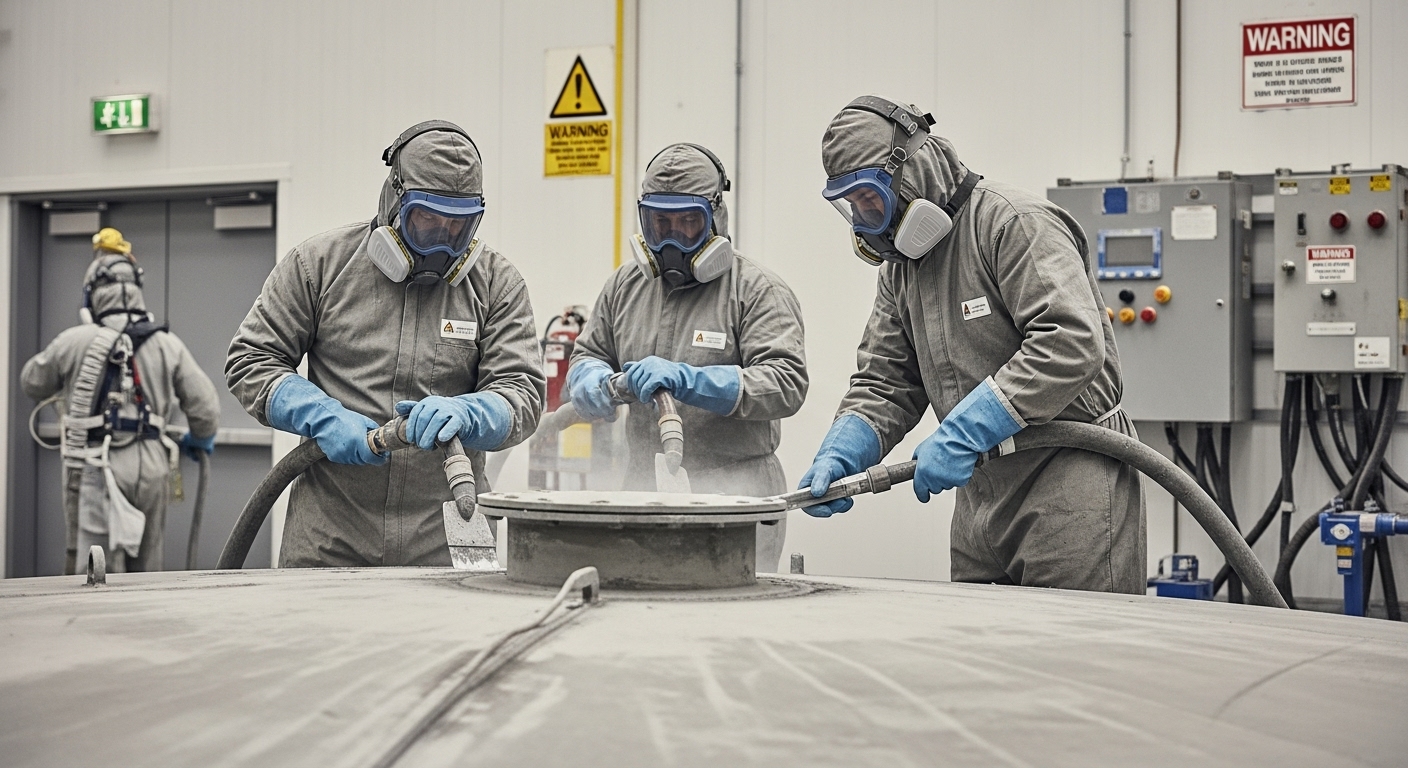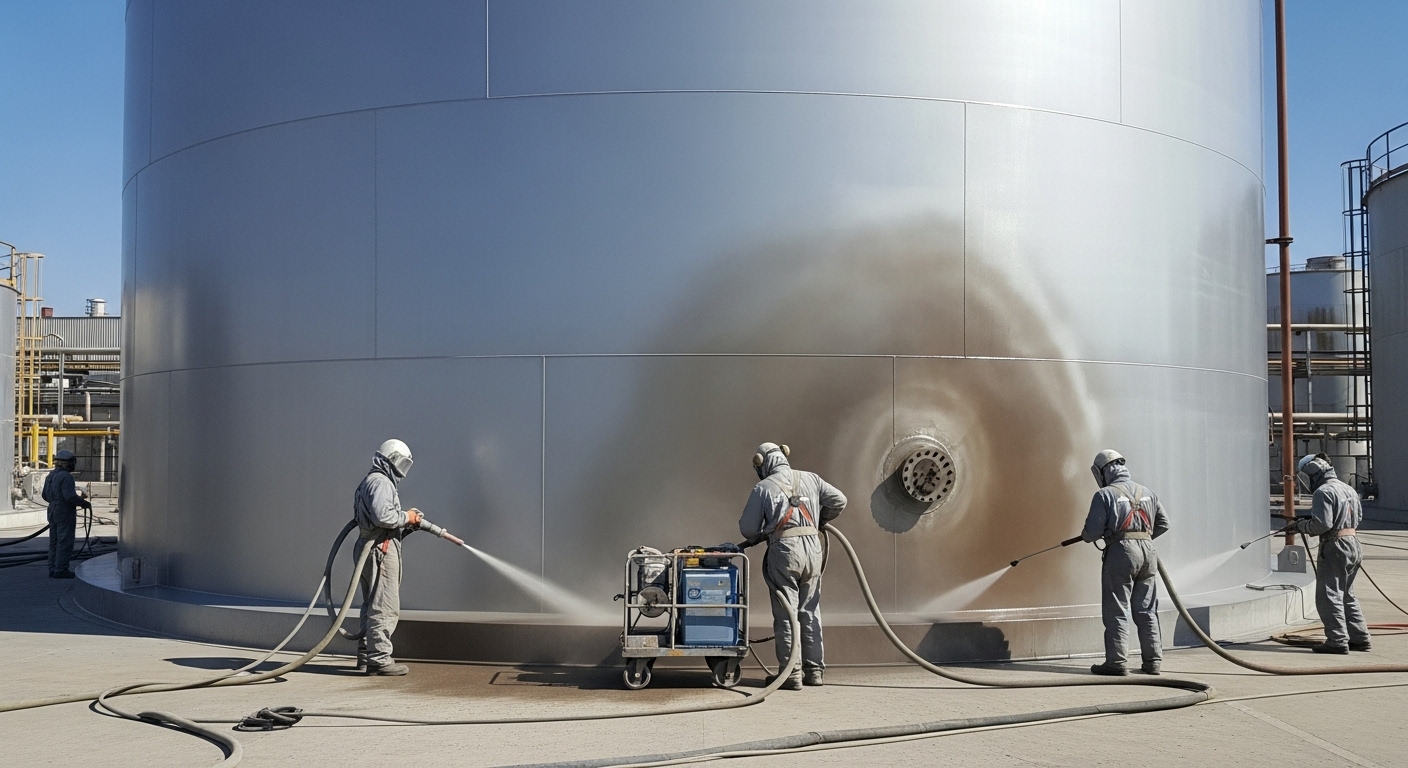Lead paint is a hidden danger that still lingers in many water tanks across the country. What looks like a simple coating problem is actually a serious health and environmental risk?
Communities depend on clean, safe water every single day, yet old tanks coated with lead-based paint can compromise both water quality and public safety if left untreated. The process of water tank lead paint removal isn’t just about aesthetics—it’s about protecting people, preserving infrastructure, and meeting strict regulations that exist for good reason.
Here’s the thing: lead paint removal isn’t a job for shortcuts. It requires precision, strict safety measures, and full environmental compliance to ensure no harmful materials are released into the community.
In this blog, we’ll break down the risks, the removal process, and why proper safety measures matter. Because when it comes to water, there’s no room for compromise.
Why Water Tank Lead Paint Removal Is a Critical Community Priority
Lead was once a common ingredient in coatings because of its durability. But over time, research showed how toxic it really is—especially when it comes into contact with drinking water sources. Flaking, peeling, or corroding paint inside a water tank doesn’t just look bad, it poses risks that can seep into the water supply.
Communities rely on municipalities and contractors to handle these risks responsibly. That’s why lead paint regulations and environmental protection guidelines exist. They are not red tape—they are shields to keep families safe. Without proper removal, lead exposure can lead to severe health effects, especially in children. It can also damage the structural integrity of the tank, creating costly problems down the road.
When handled properly, water tank lead paint removal is a step toward cleaner water, healthier people, and infrastructure that lasts for decades instead of deteriorating under toxic layers of the past.
The Role of Lead Abatement and RRP Compliance in Water Tank Safety
Lead abatement is more than just scraping away old paint. It’s a carefully planned and executed process designed to eliminate hazards while keeping workers and the environment safe. Here’s what that means in practice:
- Contractors must follow strict RRP compliance standards (Renovation, Repair, and Painting rules) when disturbing lead-based coatings.
- Certified teams ensure every action meets federal and state regulations, from protective gear for workers to proper sealing of the work area.
- Specialized equipment and containment systems prevent particles from spreading into the community.
This isn’t optional. Non-compliance can result in fines, shutdowns, and worse—potential exposure that puts lives at risk. By following comprehensive safety protocols, professional contractors don’t just check boxes. They actively protect workers, nearby residents, and the environment while restoring tanks to safe working condition.
Tackling Hazardous Paint Removal with Worker Safety at The Center
When people think of hazardous paint removal, they often picture equipment and technology—but at the heart of it all is worker safety. Removing lead paint is one of the most dangerous tasks in industrial maintenance, and without the right approach, workers can face long-term health consequences.
Here’s how responsible contractors prioritize worker safety during these projects:
- Respirators and protective suits are mandatory.
- Strict training ensures every worker understands the risks.
- Ventilation and air monitoring keep harmful dust levels in check.
- Decontamination stations reduce the chance of carrying lead dust outside the job site.
These practices may seem intense, but they’re non-negotiable. Every tank that undergoes hazardous paint removal is a test of commitment to both safety and community trust. And for municipalities, partnering with contractors who value their people means ensuring the job is done right and responsibly.
Ensuring Environmental Safety Through Containment and Disposal Requirements
Lead paint removal isn’t only about what happens on the tank—it’s about what happens afterward. Improper handling of waste can harm soil, water, and wildlife. That’s why environmental safety plays such a vital role in every removal project.
Contractors follow strict disposal requirements to ensure all contaminated debris, dust, and water runoff are safely managed. This often means using sealed containers, licensed hazardous waste facilities, and documented disposal practices. These steps prove accountability and reinforce environmental compliance at every stage.
Containment systems also come into play here. By sealing off the tank during work, contractors prevent particles from escaping into the community. This careful balance of removal, containment, and safe disposal protects not only today’s water but also the ecosystems that support future generations.
The Importance Of Post-Removal Coating For Long-Term Tank Protection
After the old, dangerous paint is gone, the work isn’t finished. Without the right protective measures, bare metal surfaces are vulnerable to corrosion, which can damage the tank and shorten its lifespan. That’s where post-removal coating comes in.
Applying a high-quality, lead-free coating system is essential for long-term protection. It ensures water quality remains safe, prevents rust, and minimizes costly repairs in the future. The right coating also improves energy efficiency and extends the intervals between maintenance cycles.
This step is as important as the removal itself. It transforms the tank from a hazard into a reliable part of the community’s infrastructure. Skipping or rushing this stage undermines the entire process, which is why trusted contractors invest just as much care in post-removal coating as they do in the abatement phase.
Protecting Communities with Safe and Responsible Water Tank Lead Paint Removal
Safe water storage isn’t just about maintaining tanks—it’s about protecting the people and communities who depend on them every day. Water tank lead paint removal is a demanding process, but when handled correctly, it prevents health risks, ensures environmental protection, and extends the lifespan of vital infrastructure.
From lead abatement practices to RRP compliance, from worker-focused safety to responsible disposal, every step matters. As communities grow and infrastructure ages, the responsibility to keep water safe only becomes more urgent. Proper lead paint removal is not just a compliance requirement—it’s a promise of safety, integrity, and reliability.
If you’re ready to protect your water systems and your community, don’t take chances with hazardous coatings. Get Safe Lead Paint Removal Services from trusted professionals who follow comprehensive safety protocols, deliver environmental compliance, and guarantee reliable results through expert post-removal coating. Your water—and your community—deserve nothing less.







